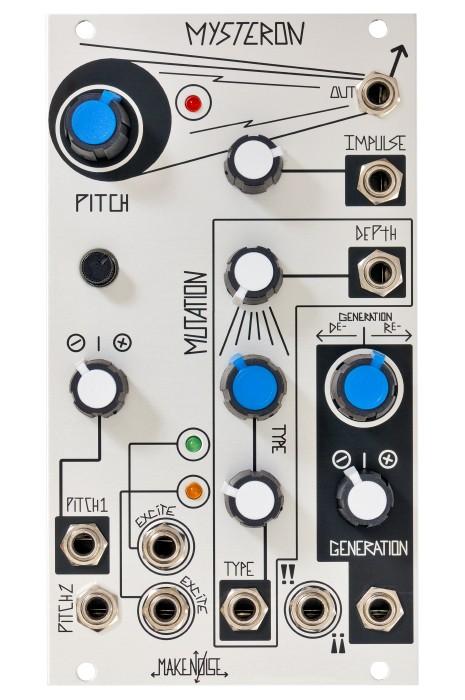Physical Modeling: Introduction
Physical modeling emulates actual physical processes with digital means. Oscillators, resonators and acoustic impedance are modeled with buffers and filters, respectively LTI systems. Although first realized when computers had sufficient power, the foundations are much older. Hiller et al. (1971) were the first to transport the 1774 wave equation by d'Alambert to the digital domain for synthesizing sounds of plucked strings.
Early Hardware
Although physical modeling algorithms sound great, offer good means for control and enable the design of interesting instruments, they had less impact on the evolution of music genres and digital instruments. Hardware synths for physical modeling from the 1990s, like the Korg Prophecy or the Yamaha VL1 did not become a success, in the first place. With prices of about 10.000 $, they were way too expensive. There are many more practical reasons for the lack of success (Bilbao et al, 2019). But the technique also had a bad timing, trying to establish in the 1990s. Cheaper and larger memory made sampling instruments more powerful and virtual analog synthesizers sounded more attractive, followed by the second wave of analog synths.
Yamaha VL1 (1994)
Software Instruments
Today, some physical modeling software emerged for high quality piano and organ synthesis (Amazona article). Other implementations aim at strings:
Pianoteq Pro 6
Organteq Alpha
Strum GS 2
AAS Chromophone 2
Modular
Since simple physical models are nowadays easily implemented on small embedded systems, various modules exist on the market. It a modular setup, this is especially interesting, since arbitrary excitation signals can be generated and patched. These are just two examples:


Physical Models in Experimental Music
Eikasia
Unlike FM synthesis, subtractive synthesis or sampling, physical modeling does not come with genre-defining examples from popular music. However, the technique has been used a lot in the context of experimental music (Chafe, 2004). Eikasia (1999) by Hans Tutschku was realized using the IRCAM software Modalys:
S-Morphe-S
In his 2002 work S-Morphe-S, Matthew Burtner used physical models of singing bowls, excited by a saxophone:
References
2019
- Stefan Bilbao, Charlotte Desvages, Michele Ducceschi, Brian Hamilton, Reginald Harrison-Harsley, Alberto Torin, and Craig Webb.
Physical modeling, algorithms, and sound synthesis: the ness project.
Computer Music Journal, 43(2-3):15–30, 2019.
[details] [BibTeX▼]
2004
- Chris Chafe.
Case studies of physical models in music composition.
In Proceedings of the 18th International Congress on Acoustics. 2004.
[details] [BibTeX▼]
1995
- Vesa Välimäki.
Discrete-time modeling of acoustic tubes using fractional delay filters.
Helsinki University of Technology, 1995.
[details] [BibTeX▼] - Gijs de Bruin and Maarten van Walstijn.
Physical models of wind instruments: A generalized excitation coupled with a modular tube simulation platform*.
Journal of New Music Research, 24(2):148–163, 1995.
[details] [BibTeX▼]
1993
- Matti Karjalainen, Vesa Välimäki, and Zoltán Jánosy.
Towards High-Quality Sound Synthesis of the Guitar and String Instruments.
In Computer Music Association, 56–63. 1993.
[details] [BibTeX▼]
1992
- Julius O Smith.
Physical modeling using digital waveguides.
Computer music journal, 16(4):74–91, 1992.
[details] [BibTeX▼]
1971
- Lejaren Hiller and Pierre Ruiz.
Synthesizing musical sounds by solving the wave equation for vibrating objects: part 1.
Journal of the Audio Engineering Society, 19(6):462–470, 1971.
[details] [BibTeX▼] - Lejaren Hiller and Pierre Ruiz.
Synthesizing musical sounds by solving the wave equation for vibrating objects: part 2.
Journal of the Audio Engineering Society, 19(7):542–551, 1971.
[details] [BibTeX▼]
